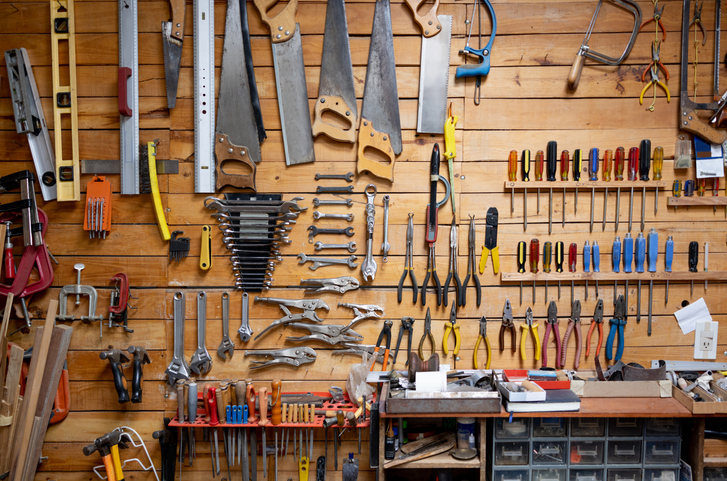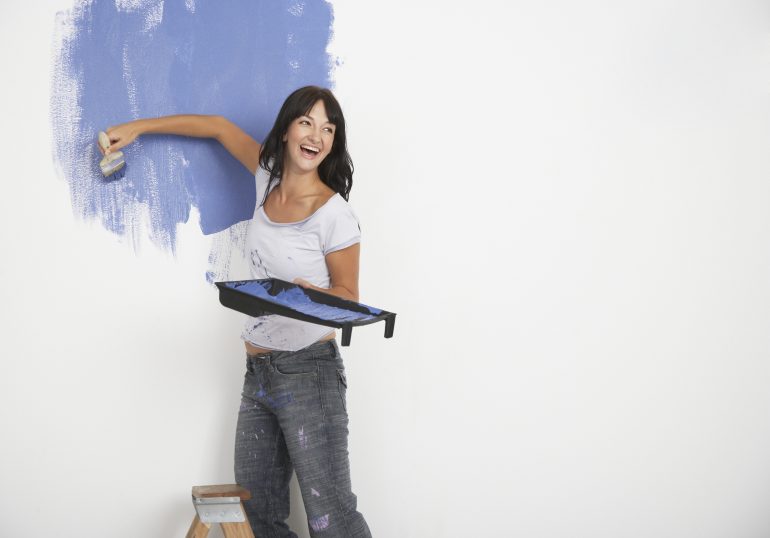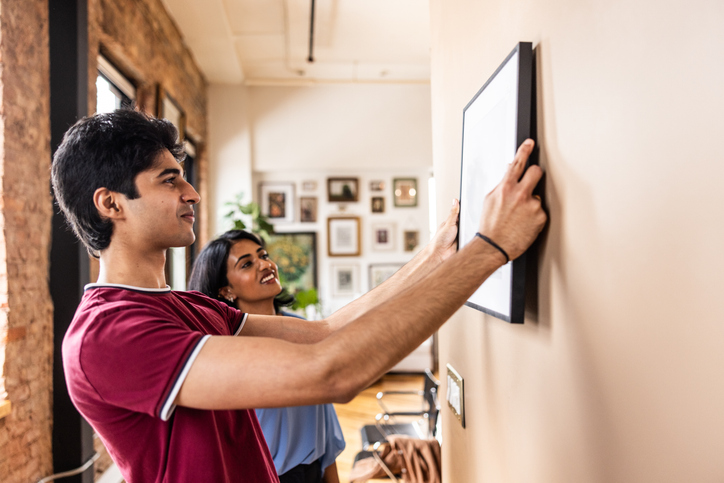From squeaky hinges to dripping taps, home maintenance has a habit of demanding attention at the most inconvenient moments. Thankfully, not every fix always requires a professional touch. With a little know-how and the right tools, tackling everyday repairs can be both empowering and cost-effective. In this guide, we’re breaking down six essential DIY skills that can make managing a home far simpler.
Plus, for anyone wondering how to learn DIY skills from scratch, there are plenty of easy starting points to build confidence along the way. Ready to roll up those sleeves and get practical? Let’s get to work.
Getting Started: Safe Tool Use

Make sure you know what everything does and how to use it (Credit: Hispanolistic via Getty Images)
The first step in how to learn DIY is understanding the basics of tool handling. Knowing how to use a hammer, drill, or saw safely forms the foundation of every home improvement task. Safety always comes first. Reading manufacturer instructions, wearing protective gear, and keeping the workspace clear are small habits that make big differences. Even recognising the right drill bit or screw size prevents unnecessary frustration.
1. Painting and Patching Like a Pro

Painting like a pro! (Credit: Paul Bradbury via Getty Images)
Among the most basic DIY skills, painting offers one of the quickest ways to refresh a home without requiring advanced experience or tools. The secret lies in preparation. Walls should be cleaned, patched, and sanded before any brushstroke begins. A putty knife and spackle mend nail holes and dents, while careful taping around edges ensures those crisp, professional lines.
Beginners often find that starting with a modest project – perhaps a small utility wall – offers the perfect opportunity to test techniques before tackling larger spaces. Such areas provide a safe setting to observe how different brushes, rollers, and finishes behave.
2. Measuring, Levelling, and Hanging with Precision

Satisfying symmetry (Credit: MoMo Productions via Getty Images)
Creating a gallery wall or hanging a mirror may appear simple, yet achieving symmetry requires practice and patience. Mastering measurement and alignment remains one of the most valuable basic DIY skills for any homeowner.
A reliable tape measure and sturdy level form the foundation, but visual balance matters just as much. Artwork positioned at eye level – around 145 centimetres from floor to centre – tends to create the most harmonious look.
To avoid unnecessary holes, paper templates can be used to map out arrangements before making any marks on the wall. This previewing method allows adjustments until everything feels just right.
3. Furniture Assembly and Refinishing

Assembling flat pack furniture is fun, and ultimately rewarding (Credit: Caia Image via Getty Images)
Flat-pack furniture may challenge patience, yet it offers an excellent opportunity to gain those vital DIY skills and build attention to detail. Taking time to review diagrams and sort components before beginning transforms the process into a smoother, more convenient experience. Taking things a step further, refinishing older pieces can introduce sustainable ideas and personal creativity into the home. This might include sanding surfaces smooth, staining to highlight natural grain, or painting to complement a modern interior all revive well-loved furniture.
4. Weatherproofing and Home Maintenance

Insulating water pipes can lower your energy costs (Credit: NC Photo via Getty Images)
Each season presents new challenges for the home, and weatherproofing provides an effective defence against the elements. Knowing how to seal gaps, replace weatherstripping, and insulate exposed pipes keeps comfort high and can lower energy costs.
A routine inspection of windows and doors can reveal small openings that allow drafts to creep in. As a prime example, applying caulk along visible gaps or adding foam insulation around vulnerable areas helps to preserve warmth. The good news is, many sustainability organisations and energy agencies publish clear, accessible guides outlining these techniques. A single weekend devoted to maintenance can improve efficiency and enhance everyday convenience – highlighting that a little proactive care can go a long way.
5. Grouting and Caulking for a Polished Finish

Grouted tiles are waterproof and they look good! (Credit: kampee patisena via Getty Images)
Sometimes the smallest details make the biggest difference. Fresh grout between tiles or a neat bead of caulk along a bath edge can instantly elevate a space from “well-used” to “well-kept.”
Grouting fills the gaps between tiles, creating a clean, water-resistant seal that keeps moisture at bay. Over time, it can discolour or crack, but regrouting is refreshingly simple with the right tools. Meanwhile, caulking – used around sinks, tubs, or windows – prevents water seepage and seals joints for a flawless finish. When it comes to how to learn DIY, practice makes all the difference. But, while earning that experience, it’s often best to begin on small areas such as a splashback or shower corner.
DIY Not?

A well-earned cuppa! (Credit: Richard Drury via Getty Images)
Some projects are best left to the professionals – no question. Yet many small jobs sit comfortably within reach of the everyday homeowner. Painting a room, fixing small drafts or regrouting tiles can all be learned over time, each one building familiarity and ease. The beauty of these essential DIY skills lies in their simplicity. With practice, they can turn regular upkeep into something both manageable and satisfying, making it easier to keep a home running smoothly and looking its best. And for anyone looking to learn DIY skills, the journey doesn’t need to be daunting – starting small, staying curious, and building confidence step by step is all it takes to become surprisingly capable around the home.












